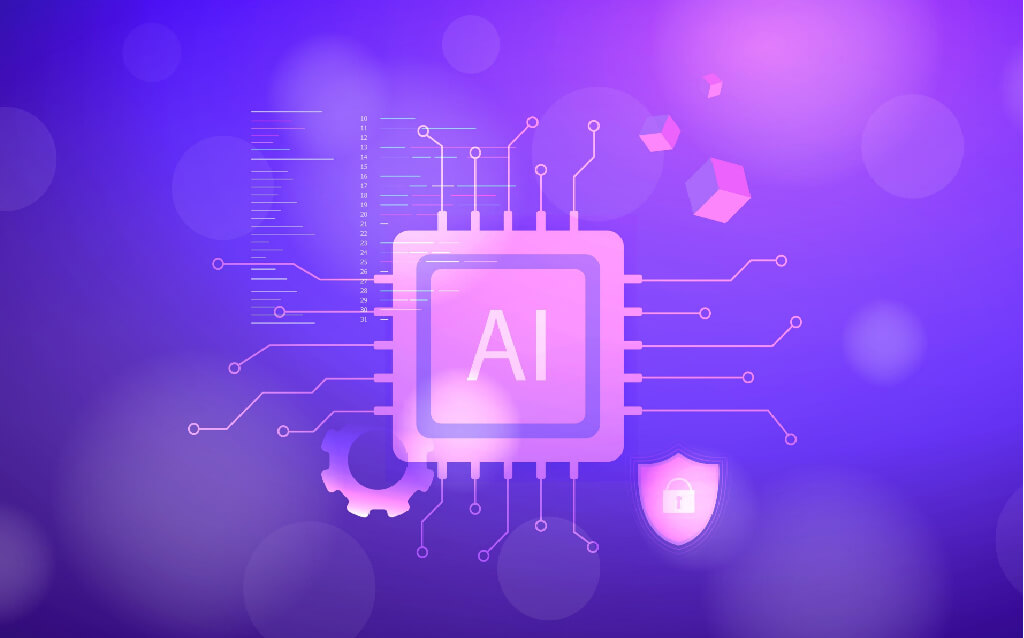
EXECUTIVE SUMMARY:
In businesses everywhere, mention of Artificial Intelligence (AI) simultaneously evokes a sense of optimism, enthusiasm and skepticism, if not a certain degree of fear. The AI robots are about to take control of the…sorry, wrong article.
The future of AI and ML in 2024
The rapid advancement of artificial intelligence has led to its widespread integration across industries and ecosystems, including those belonging to both cyber adversaries and cyber defenders.
Hackers hope to get a handle on AI in order to launch new threats at-speed and scale. According to experts, adversarial plans likely include phishing initiatives with ransomware payloads, deepfake scams that deceive executives, and malware scripts that are rewrites of existing threats, enabling the code to evade detection.
“Next year we’ll see more threat actors adopt AI to accelerate and expand every aspect of their toolkit,” says Check Point Threat Intelligence Group Manager, Sergey Shykevich.
AI as a double-edged sword
However, although hackers aim to use AI maliciously, AI is a double-edged sword, and research indicates that it will serve as a valuable force-multiplier for cyber security professionals in 2024 (and beyond). It will continue to transform threat identification, enhance organizations’ security posture, and lead to a safer cyber ecosystem across industries.
“Just as we have seen cyber criminals tap into the potential of AI and ML, so too will cyber defenders. We have already seen significant investment in AI for cyber security, and that will continue as more companies look to guard against advanced threats,” says Shykevich.
The key is leveraging AI’s strengths to counter its own weaknesses.
Leveraging AI’s strengths
Among cyber security professionals, artificial intelligence is often used at the “identification” stage of the SANS Institute’s well-known incident response framework. In other words, AI can help identify incidents in minutes, rather than in hours or days. AI can quickly parse through immense volumes of data to isolate patterns that point to the source and scope of a threat.
A truncated incident identification timeline can lead to faster breach containment, saving organizations on costs. The Cost of a Data Breach 2023 global survey has found that use of AI can speed up breach containment by 100 days (on average), and that AI and automation have delivered cost savings of nearly $1.8 million for individual organizations.
“In the coming year, we must innovate faster than the threats we face to stay one step ahead. Let’s harness the full potential of AI for cybersecurity,” says Shykevich.
Enhancing cyber security posture
In terms of bolstering an organization’s overall security posture, because AI can learn from past threats, AI can vastly improve threat detection capabilities. Using historical data, machine learning algorithms can track patterns and actually develop adaptive, new threat detection methods, making cyber breaches more difficult for adversaries to execute over the long-term.
AI can also automate repetitive tasks, eliminating human error and enabling humans to take on higher-level work. Beyond that, AI can improve the accuracy of decision-making, elevating the competence levels of cyber security teams.
All of these actions, among others, enable AI-powered solutions (and AI-focused security staff) to protect people, processes and technologies better than otherwise possible via traditional cyber security tools. AI is becoming and will continue to establish itself as an invaluable asset within the cyber security landscape.
That said, “In general, while organizations have found that AI is sexy, that doesn’t mean that we need to use AI everywhere. We need to be careful. We need to use it when it’s relevant, and not when it’s irrelevant,” cautions Check Point’s Global CISO emeritus and Field CISO for the EMEA region, Jonathan Fischbein.
A safer cyber ecosystem at-large
AI-based cyber security solutions are becoming increasingly critical components of cyber security stacks, and they’re not only strengthening individual organizations’ security – they’re able to help strengthen third-party security, ultimately strengthening the security of the supply chain and that of industry ecosystems at-large.
Policy makers around the world are convening to address the risks associated with AI and automated systems, working to ensure the security of divergent industries – from critical infrastructure to healthcare – and protection for those who they serve. “There have been significant steps in Europe and the US in regulating the use of AI,” says Shykevich.
AI is fostering new types of partnerships between humans and machines, which allow for outsized cyber security outcomes – ones that amount to more than the sum of their parts.
Rapid change and growth
In the next few months, industry analysts anticipate continued evolution of AI-based cyber security capabilities, along with creative new use-cases for corresponding applications and code.
AI’s meteoric rise across the past decade, which has massively accelerated within the past year, signals its incredible potential to reshape the cyber landscape. Despite some degree of risk, artificial intelligence presents promise and hope for digital security like never before.
For further information about AI, ML and cyber security, please see the following resources
|

